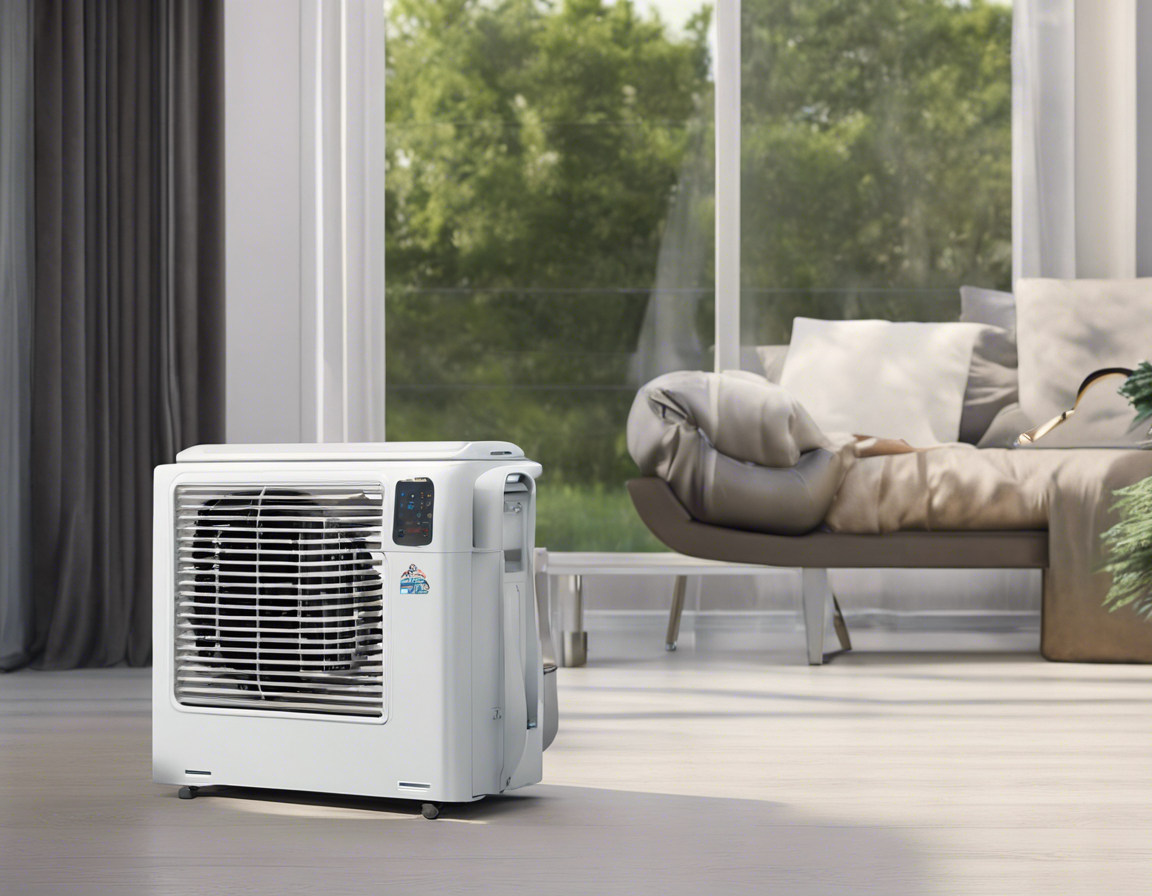When summer heat waves strike, staying cool can feel like a constant challenge. Whether you’re at home, in the office, or enjoying the outdoors, a portable air conditioner (AC) unit can be your best companion for beating the heat and staying comfortable. These compact devices are designed to provide cooling relief in various settings and are especially handy when central air conditioning is unavailable or insufficient. In this article, we will explore the benefits of portable AC units, how they work, their different types and sizes, as well as tips on how to choose the right one for your needs.
How Do Portable AC Units Work?
Portable air conditioners operate under the same basic principles as traditional AC systems. They use a refrigeration cycle to remove warm air from a space and replace it with cool air. The unit draws in warm air, passes it over cooling coils filled with refrigerant, and then expels the cooled air back into the room. The heat extracted from the air is vented out through an exhaust hose that can be installed through a window, wall, or dropped ceiling.
Benefits of Portable AC Units
Portability: As the name suggests, one of the primary benefits of portable AC units is their mobility. You can easily move them from room to room, or even take them on the go, providing instant cooling wherever you need it.
Easy Installation: Unlike fixed air conditioning systems that require professional installation, portable AC units are typically easy to set up. Most models come with window kits and exhaust hoses that can be installed without any special tools.
Energy Efficiency: Portable AC units are designed to cool specific areas or rooms, which can result in energy savings compared to running a central air system to cool an entire house. This targeted cooling approach can be especially cost-effective in homes where certain rooms are used more frequently than others.
Versatility: Portable AC units come in different sizes and capacities, making it easy to find one that suits your specific cooling needs. Whether you need to cool a small bedroom, a large living room, or a workspace, there’s a portable unit that can accommodate your requirements.
Affordability: In general, portable AC units are more affordable than installing a central air conditioning system. They offer a cost-effective cooling solution for renters or homeowners who are looking for a temporary or supplemental cooling option.
Types of Portable AC Units
Single-Hose Portable AC Units: These units are the most common type of portable AC and are designed to take in warm air from the room, cool it down, and expel the hot air and moisture outside through a single exhaust hose.
Dual-Hose Portable AC Units: Dual-hose portable AC units have two separate hoses – one for drawing in air from the outside to cool the unit’s condenser and the other for expelling hot air back outside. This design can be more energy-efficient than single-hose units.
Evaporative Air Coolers: Also known as swamp coolers, evaporative air coolers work by evaporating water to cool and humidify the air. They are suitable for dry climates and can be more energy-efficient than traditional AC units.
Choosing the Right Portable AC Unit
Room Size: Consider the size of the room you need to cool when choosing a portable AC unit. Units with higher British Thermal Units (BTUs) are suitable for larger rooms, while smaller units are best for smaller spaces.
Energy Efficiency: Look for Energy Star certified units that are designed to consume less energy, saving you money on utility bills while reducing your environmental impact.
Noise Level: Portable AC units can generate noise while operating. Check the decibel (dB) level of the unit to ensure it won’t disrupt your activities, especially if you plan to use it in a bedroom or office.
Additional Features: Some portable AC units come with features like remote controls, programmable timers, adjustable fan speeds, and dehumidifying functions. Consider which features are important to you for added convenience and comfort.
Maintenance: Regular maintenance is essential to keep your portable AC unit running efficiently. Check the unit’s filters, coils, and hoses periodically and clean or replace them as needed to ensure optimal performance.
FAQs about Portable AC Units
1. Can I use a portable AC unit in a room without windows?
Portable AC units require a window or similar opening to vent hot air outside. If your room doesn’t have a window, you can use a sliding glass door, a vent through the wall, or a drop ceiling as an alternative.
2. How often should I clean the filters of my portable AC unit?
It’s recommended to clean or replace the filters of your portable AC unit every 2-4 weeks, depending on usage. Clogged filters can reduce the unit’s efficiency and airflow.
3. Can I leave my portable AC unit running all day?
While portable AC units are designed for continuous operation, it’s advisable to give the unit periodic breaks to prevent overworking the compressor. You can use a programmable timer to schedule on/off cycles.
4. How much electricity does a portable AC unit consume?
The electricity consumption of a portable AC unit depends on its size, cooling capacity, and energy efficiency. You can check the unit’s Energy Efficiency Ratio (EER) to estimate its energy usage.
5. Can I use a portable AC unit in conjunction with a central air conditioning system?
Yes, you can use a portable AC unit to supplement your central air conditioning system in rooms that need additional cooling. This can help reduce the overall energy consumption of your home.
In conclusion, portable AC units are versatile, energy-efficient, and convenient cooling solutions for staying comfortable in hot weather. By understanding how these units work, the different types available, and how to choose the right one for your needs, you can beat the heat and enjoy a cool environment wherever you are. With a portable AC unit by your side, you can stay cool and comfortable no matter how high the temperatures rise.



